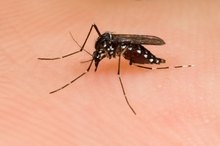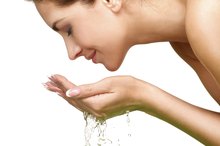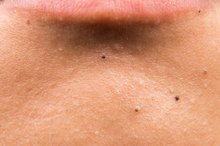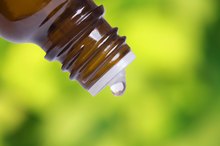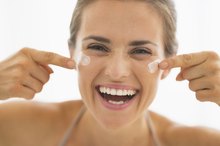What does fact checked mean?
At Healthfully, we strive to deliver objective content that is accurate and up-to-date. Our team periodically reviews articles in order to ensure content quality. The sources cited below consist of evidence from peer-reviewed journals, prominent medical organizations, academic associations, and government data.
The information contained on this site is for informational purposes only, and should not be used as a substitute for the advice of a professional health care provider. Please check with the appropriate physician regarding health questions and concerns. Although we strive to deliver accurate and up-to-date information, no guarantee to that effect is made.
How to Get Rid of Freckles With Vitamin C
Though many men and women born with freckles treasure their extra spots, others regard them as a nuisance and want to get rid of them. It's possible to conceal freckles with tinted moisturizers or cosmetic foundations and concealers, but a few permanent solutions exist. One option includes applying vitamin C to freckles, says the New Zealand Dermatological Society 2. This reduces the freckle pigment and makes them less noticeable. Before applying vitamin C to your face to remove freckles, consult a dermatologist about the potential side effects.
Clean your face with warm water and a gentle cleanser. Gently pat dry with a clean towel.
How to Get Rid of Age Spots Naturally
Learn More
Cut a medium-size lemon in half with a sharp knife.
Squeeze the lemon juice into a small bowl. Remove any seeds that fall into the bowl.
How to Get Rid of Dark Spots From Mosquito Bites
Learn More
Add 1/2 tsp. of sugar to the juice and stir with a spoon.
Dip a cotton ball into the lemon juice and sugar mixture and allow it to absorb the mixture.
Rub the soaked cotton ball over your freckles, gently exfoliating your skin. Lemons contain high amounts of vitamin C, an acid often referred to as "ascorbic acid." The acid naturally fade freckles, sunspots and even scars, according to Care2.com 1.
Repeat at least once per week for best results.
Tips
The sugar in this recipe exfoliates and removes built-up skin cells.
Related Articles
References
Writer Bio
Wendy Rose Gould is a professional journalist who has contributed to "Glamour" magazine and the Huffington Post, among other publications. After internships at the "Indianapolis Business Journal," "Kiwanis International" and "NUVO Newsweekly," she earned BA degrees in journalism and philosophy from Franklin College in 2008. Gould specializes in lifestyle topics.

